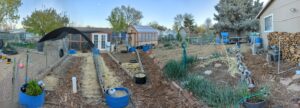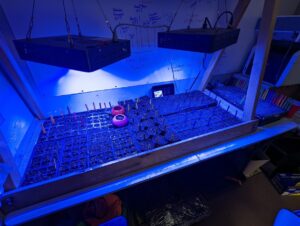

Harvesting and Processing Your Garden Bounty
 Garden to Table practices come naturally to some, but many gardeners feel overwhelmed once their plants begin to pump out a ripe harvest of organic produce. We pick it, we eat it, we share it, and still more produce remains! Now it’s time to process it! Oy vey! So much work to do! This is what our great, great, grandparents did to survive the winter.
Garden to Table practices come naturally to some, but many gardeners feel overwhelmed once their plants begin to pump out a ripe harvest of organic produce. We pick it, we eat it, we share it, and still more produce remains! Now it’s time to process it! Oy vey! So much work to do! This is what our great, great, grandparents did to survive the winter.
So I’ve put together a list of all the things that we grow in our garden, accompanied by the processing methods we perform. Seed collection and future plant propagation are part of the permaculture and sustainability processes we must perform in order to continue the garden next year from our own resources.
All fruiting plants usually produce seed, but some can be more easily propagated by cutting a 12 to 18 inch segment of plant or by root growth. Seed is produced by allowing flowers to form, allowing pollination, and then harvesting the fully ripe seeds or pods, usually dried into fall and winter. Don’t leave the pods on the plants through winter, they will decay. It’s ALWAYS a good idea to think in advance how you will label your harvested seeds. Many look the same. Avoid the confusion with good planning.
Propagated by Cutting
Grapes: Separated, Boiled Down, Cheesecloth Straining Refrigerate or freeze. Propagated by cuttings.
Raspberries and Blackberries: Eat fresh. Or make juice.
Goji Berries: Eat fresh (high antioxidants) or dehydrate and grind to powder for tea ingredients.
Sweet Potatoes: Harvest and cure for 6 weeks and store them. Propagated by slips grown on sweet potatoes.
Propagated by Seed – Collect and Dry Seeds.
Yellow Squash and Zucchini: Grated and bagged for freezing. Separate seeds and dry.
Sweet and Hot Peppers: Used in salsa or eaten fresh.
Anaheim and Poblano Peppers: Grilled and peeled. Frozen for cooking. Chile Rellenos.
Jalapenos: Pick fresh and eat. Dried and ground to powder. Smoked as chipotle seasoning.
Bell Peppers: Eat fresh or used for Stuffed Bell Peppers.
Tomatoes: Canned Whole Tomatoes, Canned Salsa, Spaghetti Sauce.
Cherry Tomato: Eat Fresh or cut in half sprinkle salt and basil. Dehydrate. Freeze to be used in meat dishes for extra flavor.
Corn: Eat fresh. Cut corn from cob and freeze. Peel cob and let kernels dry for seed. Remove later.
Cantaloupe, Watermelon, Cucumber: Eat when ripe and fresh. Cantaloupe can be frozen.
Cannabis: Pick flowering branches. Dry for 5 days. Trim and cure. Store in sealed jars after curing.
Onions and Garlic: Dry and cure for two to three weeks. Harvest seed puff ball flowers. Dry. separate cloves and replant. (root propagation)
Leeks: Pick fresh and eat. Harvest seed puff ball flowers and dry for planting.
Lettuce: Eat fresh. Let some go to seed for harvest or permaculture in place. Seeds drop.
Radishes: Eat fresh. Some people say to cook them. Let some go to seed drop. Some harvest.
Beets: Eat fresh greens. Boil the beets. Peel them. Eat them or Pickle (with eggs optional?). Leave a few to permaculture and give seed.
Herbs
Sweet Basil, Sage, Lemon Balm, Peppermint, Savory, Cilantro, Oregano, Parsley, Thyme, Rosemary, Tarragon and Thyme: Cut leaves as needed for fresh cooking recipes. Dehydrate and grind for Basil seasoning. Let flowers pollinate and turn to seed for permaculture in place or collection.
Propagated by Root
Potatoes: Harvest and cure for 2 to 3 weeks. Do not eat green. Leave some in the ground to permaculture for next season.
Jerusalem Artichokes: Harvest the roots. Eat and cook fresh. Peel and pan fry with butter, garlic, onion. Produces a sunflower. Roots will live and continue to grow.
Artichokes: Harvest the flower before it blooms. Boil until soft. Eat with dressing of choice. Artichoke is perennial and will return if soil is healthy.
Every plant eventually gets cut down and either crumbled right in place to provide an organic mulch cover to the ground, or it goes into our compost area where the chickens eat what they like, and pretty much destroy the rest with their hot chicken manure.
We often have seeds in our composted soil that survive and create volunteer plants when planting in Spring. Observing the entire plant life cycle is a pleasure and a miracle to watch. You will learn by experience and observation what is native to your agricultural zone.
Happy Gardening!


